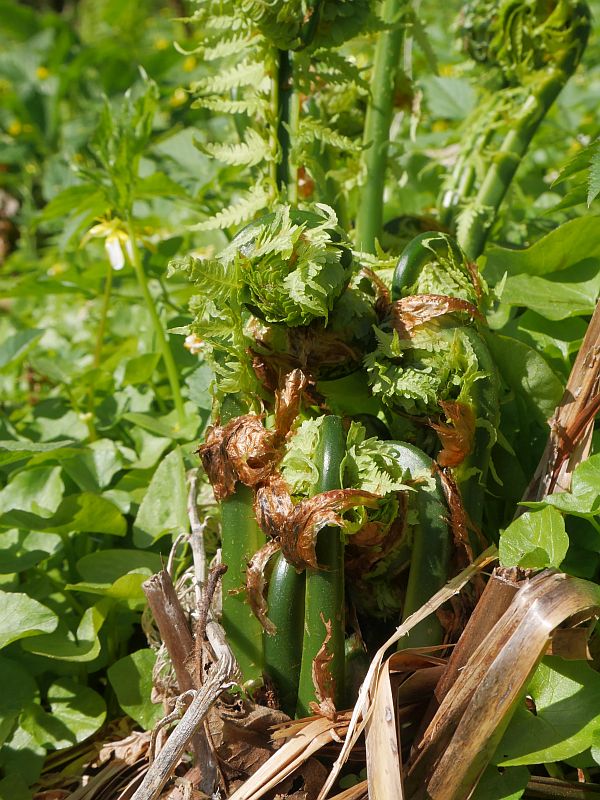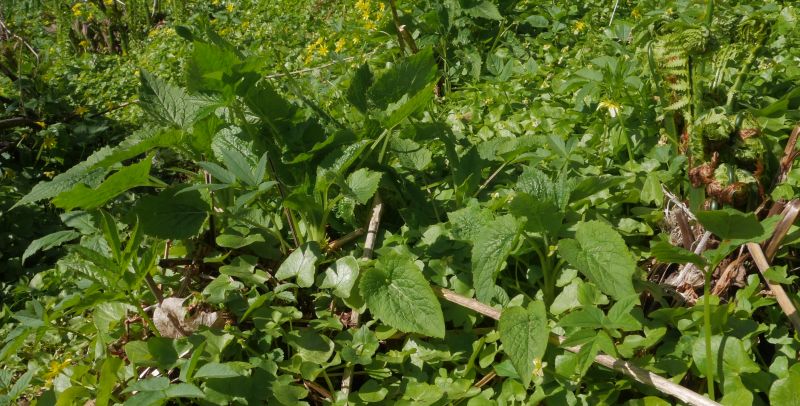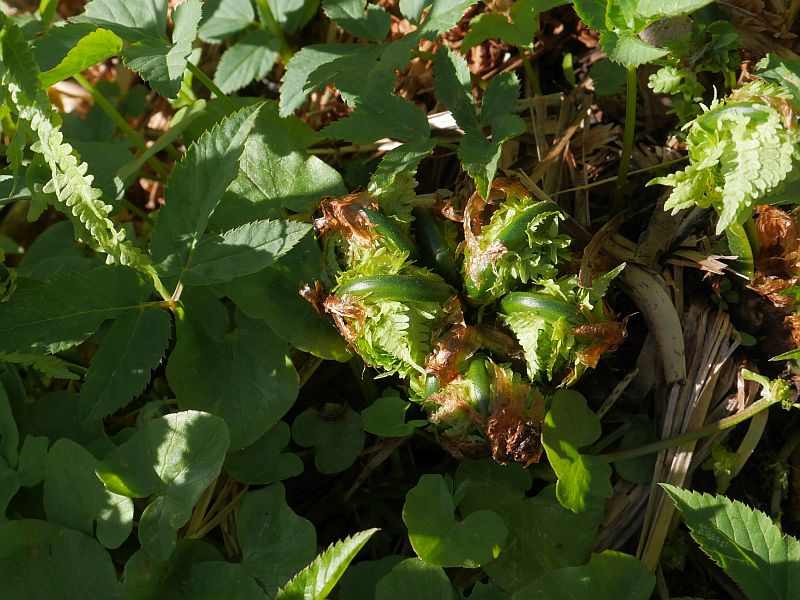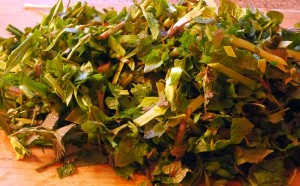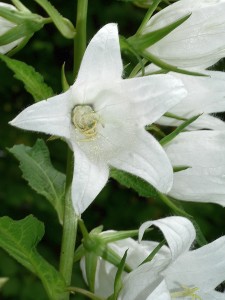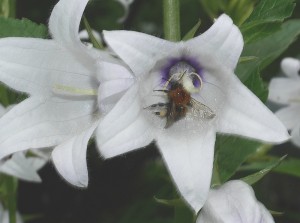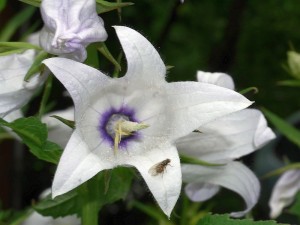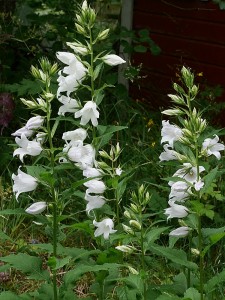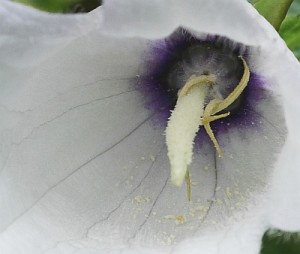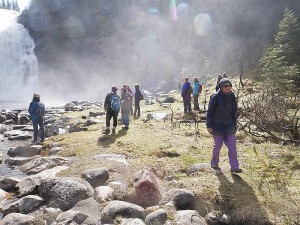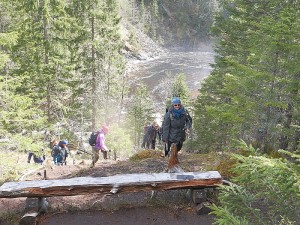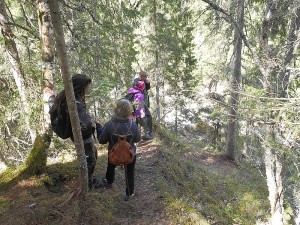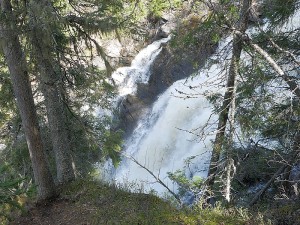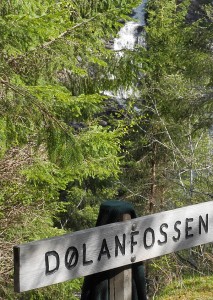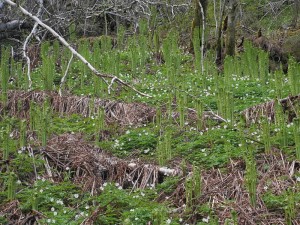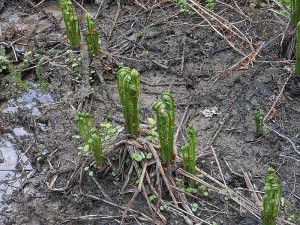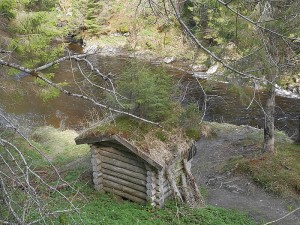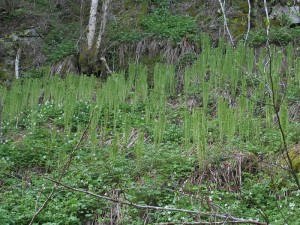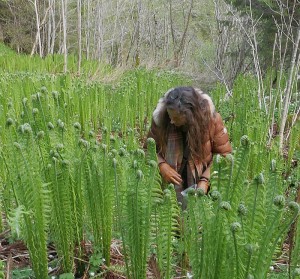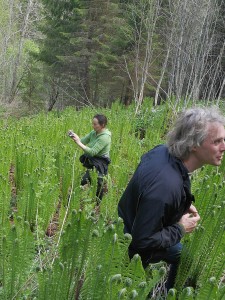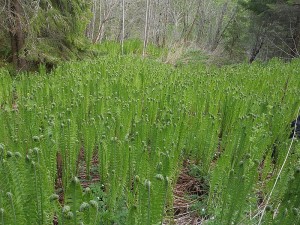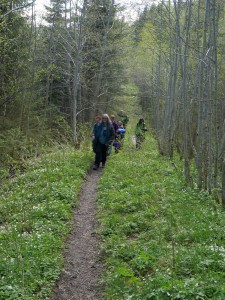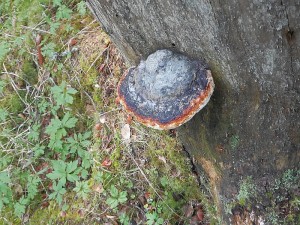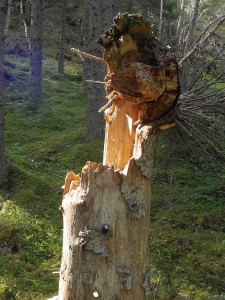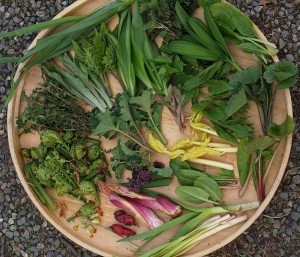A new collection of perennial vegetables from the garden on 25th April 2020, now back to cool, overcast weather. All are managed in some way.
Carum carvi (caraway / karve) greens
Urtica dioica (nettle / nesle)
Aegopodium podograria (ground elder / skvallerkål)
Allium fistulosum (Welsh onion /pipeløk)
Hablitzia tamnoides (Caucasian spinach / stjernemelde)
Campanula latifolia (giant bellflower / storklokke)
Myrrhis odorata (sweet cicely / spansk kjørvel)
Allium ursinum (ramsons / ramsløk)
Taraxacum spp. (dandelion / løvetann) 
Tag Archives: Campanula latifolia
Today’s perennial catch
23rd April 2020 perennial greens used in a delicious quiche (eggepai):
Hablitzia tamnoides (Caucasian spinach / stjernemelde)
Myrrhis odorata (sweet cicely / spansk kjørvel)
Rumex acetosa (sorrel / engsyre)
Campanula latifolia (giant bellflower / storklokke)
Urtica dioica (stinging nettle / brennesle)
Allium senescens
Heracleum sphondylium (common hogweed / kystbjørnekjeks)
Aegopodium podograria (ground elder / skvallerkål)
Naturalised Giant Bellflower
No doubt introduced by the previous owners here as an ornamental and despite the fact I spent a lot of time trying to eradicate it from parts of the garden, Campanula latifolia (giant bellflower / storklokke) is nowadays one of my most important springtime vegetables used both cooked and raw. It has naturalised under Hazel in part of the garden! Always nice to see how plants find their own way to the best spots it grows happily alongside Aegopodium podograria (ground elder / skvallerkål). See the excerpt from my book Around the World in 80 plants below.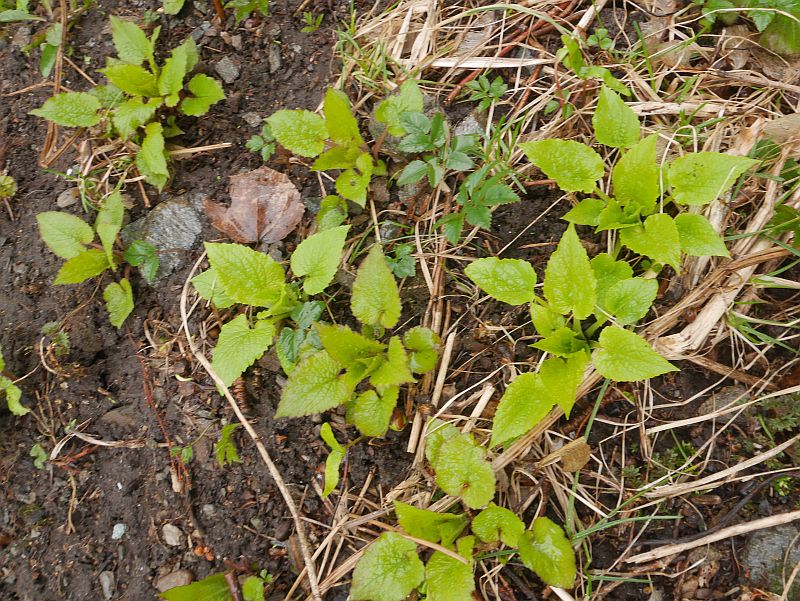
 Here is the excerpt from Around the World in 80 plants (I’m happy to send signed copies within Norway). “When I first moved to my present garden, there was one weed that I struggled to eradicate from my cultivated beds, Campanula latifolia or giant bellflower. The roots in particular were almost impossible to dig out, having a knack of germinating in the most difficult places. Then, one day I was reading the Norwegian book “Gratis Mat av Ville Planter (Free Food from Wild Plants; Holmboe, 1941). I learnt that my worst weed had been wild gathered for food by farmers in my area in the 17th century, a tradition which probably died out soon afterwards. The leaves and stems were collected in springtime and made into a soup. Similar stories have also survived from other parts of Norway and Sweden. Storklokke (literally large bell) is considered to be one of the most commonly used wild food plants in the past in Norway. Both the leaves and roots were used, the latter also ground and added to bread.”
Here is the excerpt from Around the World in 80 plants (I’m happy to send signed copies within Norway). “When I first moved to my present garden, there was one weed that I struggled to eradicate from my cultivated beds, Campanula latifolia or giant bellflower. The roots in particular were almost impossible to dig out, having a knack of germinating in the most difficult places. Then, one day I was reading the Norwegian book “Gratis Mat av Ville Planter (Free Food from Wild Plants; Holmboe, 1941). I learnt that my worst weed had been wild gathered for food by farmers in my area in the 17th century, a tradition which probably died out soon afterwards. The leaves and stems were collected in springtime and made into a soup. Similar stories have also survived from other parts of Norway and Sweden. Storklokke (literally large bell) is considered to be one of the most commonly used wild food plants in the past in Norway. Both the leaves and roots were used, the latter also ground and added to bread.”
It was the nephew of Bishop Gunnerus (after whom the genus Gunnera was named) who published this in Norway’s first flora published 3 years after the Bishop’s death! It was stated that “storklokke” deserves to be considered as one of the best springtime greens! I totally agree! Thanks to the previous owners (Johansen) for planting it for me!
Bellflower-chokes / Storklokkeskokker
My favourite foraging author “(Samuel Thayer’s) favourite dandelion vegetable is what he calls dandelion crowns, as named originally by Euell Gibbons (1961). I prefer to call them dandichokes, as both these and artichoke hearts are located below the flowers. In the early spring, the very young flowers appear at the surface. The dandichoke is just the self-blanched crown between the top of the root, which is a bit below the surface, and the developing flowers. Although small and difficult to clean, they are very tasty”. See the picture below!

The same applies to another of the 80 in my book, Giant Bellflower (storklokke) which also has a delicious (sweet tasting) self-blanched stem between the root and the surface….bellfower-chokes or, even better in Norwegian, storklokkeskokker! I discovered this accidentally last year! I had earlier noted in my book the sweeter tasting spring shoots after blanching (covering to excude light).

In the forest garden on 16th May 2017
2nd May Abundance
Giant purple throat bellflower
Campanula latifolia is one of top favourite edimentals as anyone who has read my book will realise!
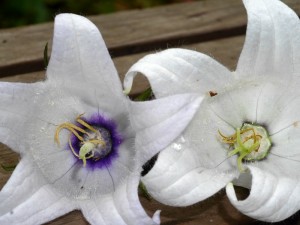
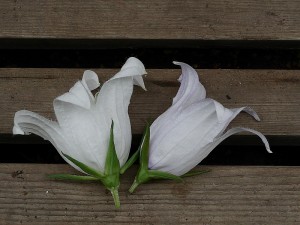
Permaveggies Course Day 3: Ostrich fern tour along the Homla

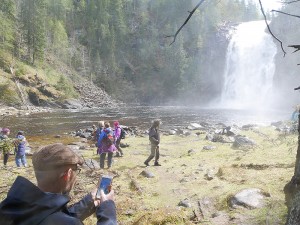
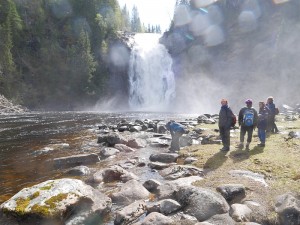
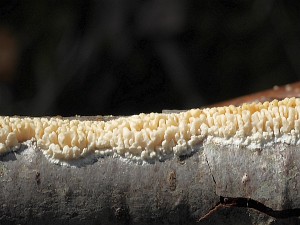
Basidioradulum radula (Tannsopp), earlier classified with the Hedgehog fungi!
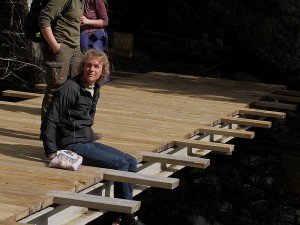
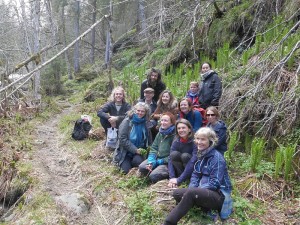
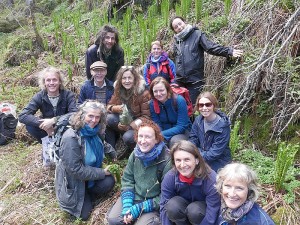
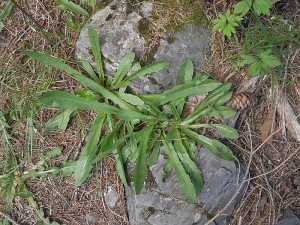
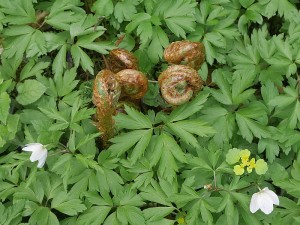
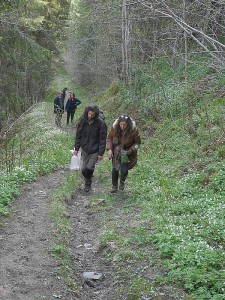
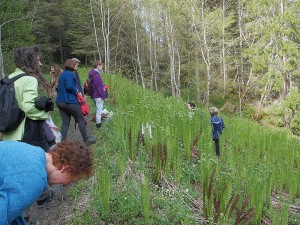
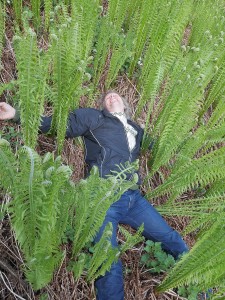
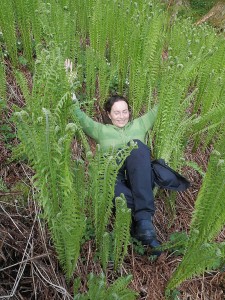
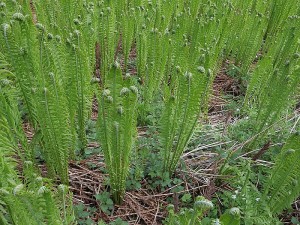
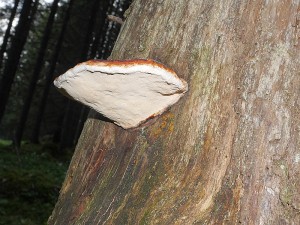
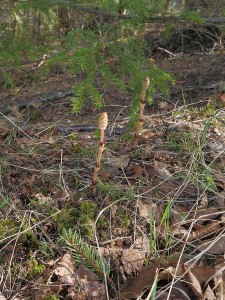
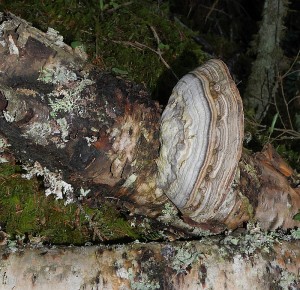
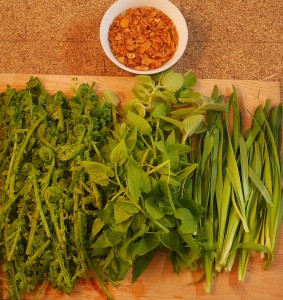
Norwegian sansai
From top left, left to right: Angelica archangelica “Vossakvann”, various dandelions / løvetann (Taraxacum), Rumex patientia (patience dock/hagesyre), Garlic bulbil shoots (forced indoors), ground elder / skvallerkål, Rheum palmatum (petiole), Rumex acetosa (sorrel / engsyre), Myrrhis odorata (with root ; sweet cicely / spansk kjørvel), chervil / hagekjørvel, Campanula latifolia (giant bellflower / storklokke), horseradish / pepperrot ( shoot), Anredera cordifolia (Madeira vine; grown inside), Alliaria petiolata ( garlic mustard / løkurt), Hemerocallis (daylily/daglilje), Ranunculus ficaria (lesser celandine / vårkål), Urtica dioica (nettle / nesle), Allium senescens x nutans, Hablitzia tamnoides (Hablitzia, Caucasian spinach / stjernemelde)…made into a stir fry with soba (buckwheat pasta)
Perennial vegetable tempura
See also https://saladdy.wordpress.com/2014/04/25/tempura-day
..includes ostrich fern, blanched lovage, Udo, perennial kale, moss-leaved dandelion, Allium victorialis, nettles, Aster scaber, scorzonera shoots, Campanula latifolia, Oca, Myrrhis, Allium scorodoprasum, garlic, Allium ursinum, Ligularia fischeri (first time), sea kale, Primula veris “Red Strain”, Rumex acetosa, Alliaria petiolata and a few others…


